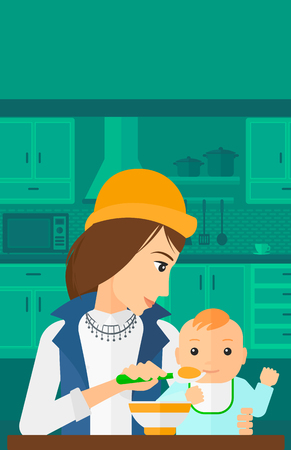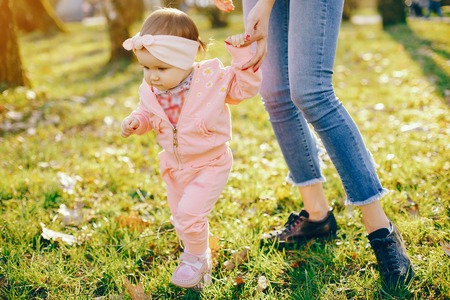Understanding Outdoor Hazards for Babies
When it comes to backyard and outdoor playtime, nothing is more important than your little one’s safety. As parents, we know how quickly curious babies can find their way into trouble, especially in spaces filled with hidden dangers. Before you set up the sandbox or lay out the picnic blanket, it’s crucial to understand what risks might be lurking in your yard. Common hazards include pools or water features that pose drowning risks, sharp gardening tools left within reach, and toxic plants that may look tempting to tiny hands. Even things like uneven ground, small rocks, or unsecured fences can turn a fun afternoon into a stressful emergency. Taking the time to identify these outdoor risks is the first step toward creating a safe, baby-friendly backyard where your child can explore and play with peace of mind.
2. Secure Boundaries and Fencing
When it comes to babyproofing your backyard, making sure your boundaries and fences are secure is absolutely essential. Little ones are curious explorers, so a sturdy fence and properly latched gates are your first line of defense against wandering feet. Here’s how you can make sure your yard is a safe haven for playtime:
Check Fence Height and Stability
Make sure your fence is at least four feet high, with no gaps or loose boards that tiny hands or feet could wiggle through. Regularly inspect for damage caused by weather, pets, or general wear and tear.
Fence & Gate Checklist
| Feature | What to Look For | Babyproofing Tip |
|---|---|---|
| Height | At least 4 ft tall | Prevents climbing or scaling |
| Gaps/Spacing | No more than 4 inches apart | Avoids head or limb entrapment |
| Latches | Self-closing, self-latching | Install high enough so baby cant reach |
| Material Condition | No splinters, rust, or sharp edges | Sand down wood; repair metal as needed |
| Ground Clearance | No space under the fence | Fill gaps with landscaping stones or boards |
Secure All Gates and Entryways
A gate left unlatched can be an open invitation for adventure. Always install child-proof locks or latches on all entry points and check them regularly to ensure they’re functioning correctly. Consider adding alarms or chimes that alert you when a gate is opened.
Pro Tip: Neighborhood Pools and Shared Spaces Matter Too!
If you live in a neighborhood with shared outdoor spaces or pools nearby, double-check those community fences and gates as well. It only takes a second for a curious crawler to find their way out.
By keeping fences, gates, and boundaries secure and well-maintained, you create a backyard that gives your baby freedom to explore—while giving you peace of mind.

3. Safe Surfaces for Play
When it comes to outdoor babyproofing, the ground your little one plays on is just as important as the toys they use or the fences you install. Not all backyard surfaces are created equal—some can be surprisingly dangerous for babies and toddlers who are learning to crawl, stand, or walk. Hard concrete patios, rocky paths, or even rough mulch can lead to painful bumps and scrapes. Instead, opt for softer, cushioned materials that minimize the risk of injury if your child takes a tumble.
One of the best choices for a safe play surface is rubber mats designed specifically for outdoor use. These mats provide excellent shock absorption and are easy to clean—plus, theyre durable enough to withstand weather changes and active play. If youre looking for a more natural feel, well-maintained soft grass can also be a great option. Just make sure its free of pesticides, sharp sticks, and other hidden hazards. For families who want extra peace of mind, consider adding a layer of playground-grade wood chips or engineered turf that meets American safety standards.
Ultimately, choosing the right ground cover is about creating a comfortable and protected environment where your baby can explore with confidence. Take time to assess your yards current surfaces and invest in upgrades where necessary—youll be glad you did every time you see your little one giggling and rolling around safely outside.
4. Babyproofing Outdoor Furniture and Equipment
When it comes to backyard safety, outdoor furniture, playsets, and grills deserve special attention. Babies and toddlers are naturally curious and love to climb, touch, and explore everything in sight, so taking a proactive approach is essential. Here’s what you need to know about making your outdoor space safer for your little one:
Inspect for Sharp Edges and Pinch Points
Outdoor furniture and equipment often have corners, screws, or moving parts that can pose risks. Run your hand along all surfaces to feel for rough spots or protruding hardware. Pay close attention to folding chairs, picnic tables, and playsets—these can have pinch points where little fingers might get caught.
| Item | Common Hazards | Safety Tips |
|---|---|---|
| Patio Tables & Chairs | Sharp edges, unstable legs | Add corner protectors, tighten bolts regularly |
| Playsets/Swings | Pinch points, loose hardware | Inspect joints monthly, use protective covers |
| Grills/BBQs | Hot surfaces, tip-over risk | Install barriers, secure grill when not in use |
Check Stability and Placement
Toddlers love to push and pull on furniture. Make sure all tables, benches, and play equipment are sturdy enough not to tip over easily. Place heavier items on flat ground away from slopes or drop-offs. If possible, anchor larger pieces—like playhouses or swing sets—securely into the ground.
Keep Grills and Tools Out of Reach
The backyard grill is a big temptation for little hands. Always keep the grill covered and locked when not in use, and store lighter fluid or tools high up or in a locked cabinet. After grilling, let everything cool down before letting kids back into the area.
Your Backyard Checklist for Safer Playtime:
- Secure all loose or wobbly furniture pieces
- Add soft covers to sharp corners and edges
- Check playset hardware for rust or looseness monthly
- Use weather-resistant covers when furniture isn’t in use
- Create clear boundaries around grills with fencing or gates
A safe backyard doesn’t mean less fun—it means more peace of mind for you as your child explores their world. Regular checkups on your outdoor setup go a long way toward keeping every playtime joyful and accident-free.
5. Guarding Against Nature’s Surprises
Backyards and outdoor spaces offer incredible opportunities for your little one to explore, but Mother Nature can be unpredictable. Ensuring your baby’s safety means looking beyond the obvious hazards and preparing for the unexpected. Here’s how you can stay ahead of nature’s surprises and keep playtime safe and enjoyable.
Protecting Against Insects
Insects like mosquitoes, bees, and ticks are common in American backyards, especially during warmer months. Dress your baby in lightweight long sleeves and pants to minimize exposed skin. Use baby-safe insect repellent approved by the American Academy of Pediatrics, and avoid scented lotions that attract bugs. Regularly check for standing water—birdbaths, flower pots, or toys left out in the rain—as these are prime mosquito breeding grounds.
Sun Safety Essentials
The U.S. sun can be strong, even on cloudy days. Always apply a broad-spectrum sunscreen with at least SPF 30 to babies older than six months, and use wide-brimmed hats and UV-protective clothing for extra defense. Set up shaded areas with umbrellas or pop-up tents, and schedule playtime before 10 a.m. or after 4 p.m., when the sun is less intense.
Be Prepared for Extreme Weather
American weather can change fast—from sudden thunderstorms to heat waves. Check the forecast before heading outside, and have a plan to move indoors if conditions turn unsafe. Keep an emergency kit handy with water, snacks, a light blanket, and extra clothing so you’re ready for anything.
Spotting and Removing Outdoor Hazards
Animals sometimes leave behind droppings or other debris that can pose health risks to curious babies. Before each play session, do a quick sweep of your yard to spot animal feces, sharp sticks, rocks, or trash that may have blown in. Wear gloves when removing any waste or harmful debris, and always wash hands thoroughly afterward.
Staying Vigilant
Your backyard should feel like a safe haven for exploration. By being aware of potential dangers from insects, the sun, unpredictable weather, and environmental debris, you can create a safer outdoor space where your child can learn and play with confidence—and you can relax knowing you’ve covered all the bases.
6. Supervision and Setting Boundaries for Playtime
Even with the best babyproofing efforts, nothing replaces the value of active supervision during outdoor playtime. Babies are curious explorers by nature, and while a safe backyard sets the stage, your watchful eye ensures they don’t find unexpected hazards. Make it a point to always be present and engaged when your little one is outside—put away your phone and let this time be about connection and safety.
Setting consistent play rules is just as crucial. Start simple: teach your baby where they can play and gently guide them back if they wander too far. Use positive reinforcement, like clapping or cheering, when they follow the rules. For example, make a game out of staying inside a certain area or walking on the garden path rather than through flower beds. Over time, these boundaries become second nature for your child.
Introducing outdoor safety basics early helps build lifelong habits. Even young toddlers can learn simple commands like “stop,” “wait,” or “come here.” Demonstrate what each means through playful repetition—showing them how to stop at the edge of the patio or wait before crossing onto grass. When you model safe behavior and explain why certain areas or actions are off-limits, you empower your child to make safer choices as they grow.
Remember, these moments aren’t just about preventing accidents—they’re also opportunities to bond with your child and nurture their confidence in exploring the world. With attentive supervision and clear boundaries, you create a backyard that’s both secure and full of wonder for every stage of childhood adventure.


